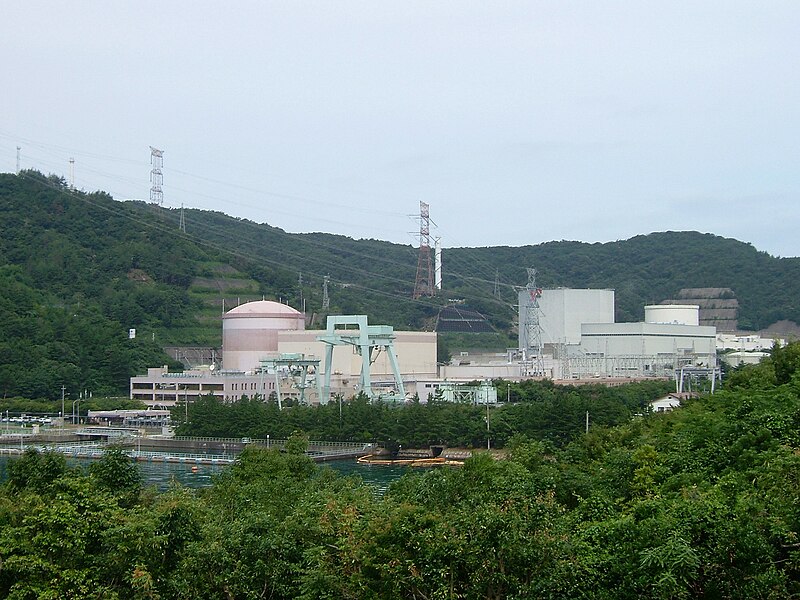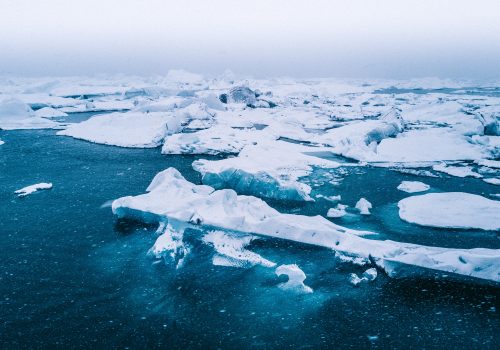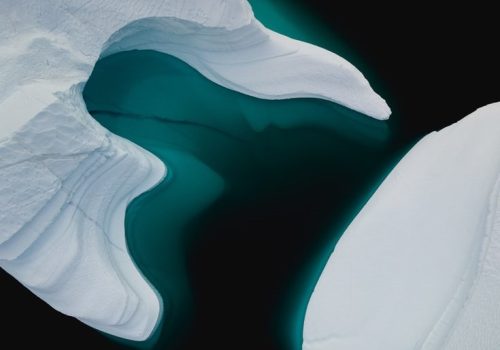Since US President Dwight Eisenhower’s “Atoms for Peace” speech at the UN General Assembly in 1953, the nuclear energy landscape has changed dramatically. Eisenhower envisaged atomic energy as a way to build bridges between nations. Yet today, as an increasing number of countries in the Global South show interest in the carbon-free technology and view its adoption as a sign of geopolitical strength, Russia has capitalized on this opportunity to entrench itself in worldwide nuclear markets, while China waits in the wings to do the same.
The world currently has sixty nuclear reactors under construction, of which more than one-third are Russian-designed. Combined with projects under planning or negotiation, Russia currently enjoys more than 40 percent of the global nuclear reactor export market in various forms, including power plant construction, investments, provision of enriched uranium, and disposal of spent fuel. Russia has also weaponized nuclear power by occupying and refusing to operate the Zaporizhzhia Nuclear Power Plant in Ukraine and is jeopardizing global security by threatening to use tactical nuclear weapons, in spite of its status as a permanent member of the United Nations Security Council and founding member of the Nuclear Non-Proliferation Treaty (NPT).
Russia’s actions compel a thorough review of the geopolitics of nuclear energy. The United States must play a forceful role in ensuring that nuclear technologies contribute to the global order rather than be weaponized against it. In that endeavor, Japan can be an invaluable ally. Facing new challenges for peaceful use of atomic energy against the backdrop of Russian and Chinese-induced geopolitical instability, Tokyo and Washington should redouble their commitment to competing in the international nuclear energy market.
For Russia, nuclear power represents another geopolitical weapon, similar to oil and gas. Its state nuclear company, Rosatom, works analogously to Gazprom in leveraging energy trade for political ends. Rosatom has provided loans for strategic nuclear power projects abroad, including Astravyets in Belarus, Akkuyu in Turkey, El Dabaa in Egypt, and Rooppur in Bangladesh.
China has also identified the nuclear industry as a strategic sector and is gathering market share with its relatively cheap nuclear reactors, including the introduction of its Hualong One reactors in Pakistan and Argentina. Saudi Arabia is also reportedly interested in the Chinese reactor design.
A nuclear reactor race has begun between democracies and authoritarian states, and the latter are currently ahead.
Nuclear projects are capital-intensive with lengthy time horizons, and authoritarian powers’ intention to distribute nuclear reactors in developing countries is motivated by more than commerce. Russian and Chinese state-backed nuclear entities accrue geopolitical influence beyond mere commercial interests. The risk is that a short-sighted approach may inexorably lead to a diminished role for democracies in the growing international nuclear industry.
By contrast, nuclear vendors from democratic states, including the United States and Japan, have engaged the civilian nuclear market with business principles as opposed to geopolitical influence. That approach risks pushing the NPT regime toward collapse if the nuclear industry of the democratic world forfeits market share to authoritarian rivals.
With its hostage-taking of the Zaporizhzhia plant, Russia has eschewed strict compliance with the NPT principle of peaceful atomic energy use. Given such recklessness, it cannot be ruled out that Moscow is helping non-democratic states develop reactors in contravention of internationally accepted rules regarding management of nuclear fuels, related technologies, and fissile materials. Meanwhile, amid tensions with the West, China is leaning on Russia’s increasing provision of highly enriched uranium to scale up its military and civilian nuclear aspirations.
The United States and Japan should counter these actions in support of a norms-based nuclear energy trade. The United States is the world’s single-largest operator of nuclear reactors with a fleet of ninety-three in operation. Japan—with whom the United States has consolidated one of the strongest bilateral civilian nuclear partnerships—has the fifth-largest fleet in the world with thirty-three reactors.
Such experience and expertise in operating atomic energy assets should be put to use internationally as the global nuclear energy market expands in response to energy security and climate challenges.
Over the past six decades, Japan has become a key US partner with regard to the development of nuclear technologies and facilities. A nuclear partnership between the United States and Japan that promotes research and development and accelerates commercialization of next-generation nuclear reactor innovations—including small modular reactors (SMRs)—could address energy insecurity globally and spread best practices in nuclear safety.
The US-Japan strategic collaboration on supporting deployment of SMRs in Ghana, announced in October 2022, is an example of such a partnership. Following this example, the two allies should pursue commitments to the other countries in agreement with the International Atomic Energy Agency’s standards of nuclear safety, security and nonproliferation for the sake of sustaining the NPT regime.
Re-establishing a visionary nuclear energy strategy should be an economic and geopolitical priority for the democratic world. The US-Japan alliance should assume the leadership in peaceful atomic energy collaboration, along with the International Atomic Energy Agency, lest deeper Russian and Chinese penetration of the global nuclear market erode NPT safeguards.
Shoichi Itoh is a senior fellow at the Institute of Energy Economics, Japan (IEEJ)
Dr. Julia Nesheiwat is a distinguished fellow at the Atlantic Council Global Energy Center
Related content
Learn more about the Global Energy Center

The Global Energy Center develops and promotes pragmatic and nonpartisan policy solutions designed to advance global energy security, enhance economic opportunity, and accelerate pathways to net-zero emissions.
Image: Tsuruga Nuclear Power Plant, courtesy of Hirorinmasa via Creative Commons OpenVerse (https://openverse.org/image/fca6af69-ad73-450d-8bbd-16321875a5d1?q=japan%20nuclear%20power)




